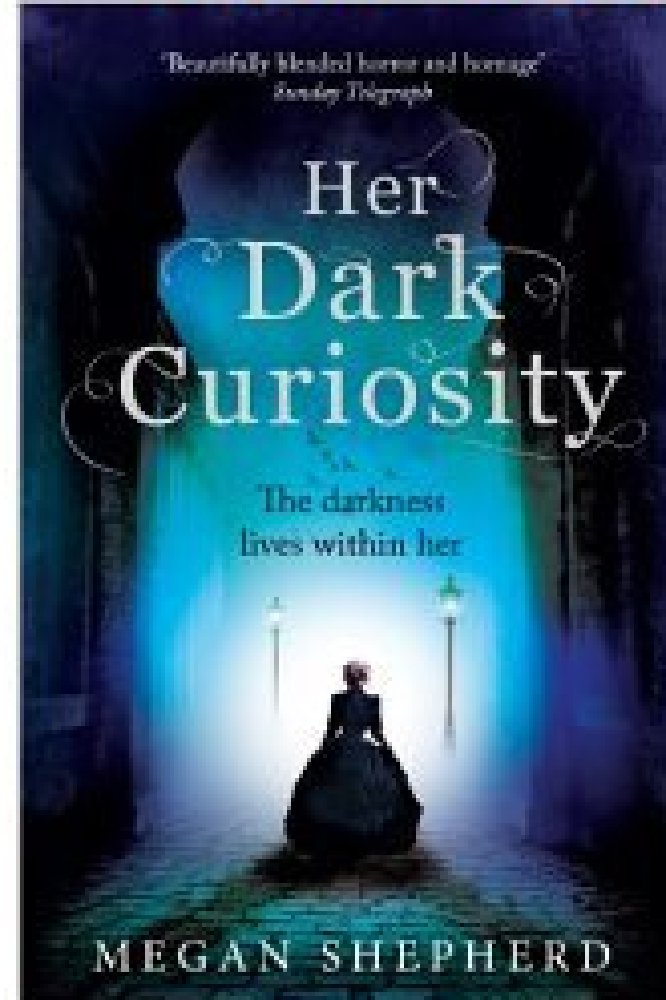
Her Dark Curiosity
Her Dark Curiosity picks up a few months after The Madman’s Daughter ends, when Juliet Moreau is back in London after having escaped her father’s island. We learn how she got back to England and what happened to those left behind, and also about the new dangers in her life—a mass murderer is stalking the streets of London and killing people close to Juliet. She has to determine the identity of the killer—and then decide if she will help him or not. It’s inspired by Jekyll & Hyde, Jack the Ripper lore, and a bit of Frankenstein.
You say you were ‘born into’ the book world. What was it like growing up in an independent bookstore?
It was marvelous. It was like having my own personal lending library—only I had to be very careful while reading so as not to break the spines! When I was little, I used to go there after school and curl up in a chair with one of the many books. In high school and college, I worked behind the counter, and got to know everything there is to know about books and authors and readers. It’s really where I fell in love with reading.
Can you tell us about the series? What is it that appeals to you about the story of Jekyll and Hyde?
Leaving The Madman’s Daughter world, which was based on The Island of Doctor Moreau by HG Wells, I knew I wanted to follow it up with another Gothic retelling. I was drawn to Jekyll & Hyde because it shared similar themes to the first book, such as dark science, and experimentation, and the role of women in Victorian life (or lack thereof). It was such a natural progression; if the first book was about man vs. animal, this book is about man vs. self. All of the characters in Her Dark Curiosity, in one way or another, struggle with a darker side of themselves.
Who were your favourite reads when you were younger?
I read a lot of the classics when I was younger, books like Robinson Crusoe and Wuthering Heights and the Count of Monte Christo. I also loved The Giver by Lowis Lowry, and Ender’s Game by Orson Scott Card. There wasn’t as much young adult literature when I was a teen, so I read plenty of adult fiction as well, like Diana Gabaldon’s Outlander series.
What draws you to Victorian literature?
I loved the challenge of writing in a different time period. I wanted my books to capture the historical tone while still being accessible to modern readers. At first I tried to mimic authentic Victorian literature, but it felt too forced and unnatural. Then I worked in a blend of a modern style, and that seemed to fit quite well. I loved exploring themes of poverty vs wealth, social classes, religion vs science, and gender issues in a historical time period, and seeing how much life has changed—or in some cases, hasn’t.
How was it to have film rights optioned for the series?
It was a dream come true. I was at home, watching television, and got an email from a producer at Fake Empire Productions talking about how much she loved the book and wanted to option it. I nearly died. A year later, she surprised me again by flying out to The Madman’s Daughter book launch party at my family’s bookstore. They’ve been such a pleasure to work with. I got a peek at the script (it’s great!), and have heard buzzings of who they might cast as the leading lady.
What’s next for you?
Just last week, I finished writing the third and final book in The Madman’s Daughter series, which will come out in January 2015. Then I’ll have another series start in summer 2015. It’s a young adult sci-fi series called The Cage, about six teenagers taken by a superintelligent race known as the Kindred, and put into a microcosm of earth that is essentially a “human zoo.” The kids have to use their very different backgrounds to figure out why they’re there and how to get home. It’s been thrilling to write in such a different setting from the first series, but it has a lot of the same themes, from madness, to the line between humans and animals, to power and control.

